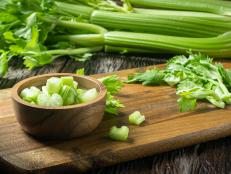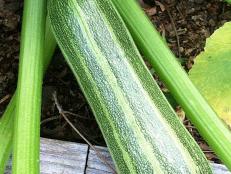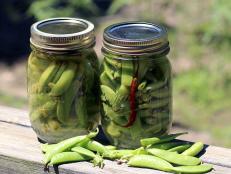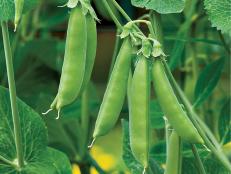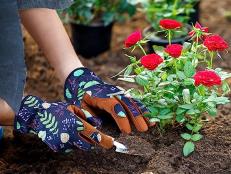How to Grow Spaghetti Squash
Add a spaghetti squash vine to your garden. It’s easy to grow, and the reward is a tasty, healthy pasta substitute.
Try your hand at growing one of the garden's most versatile vegetables: spaghetti squash. This pasta-on-the-vine is a type of winter squash that works well in the kitchen as a pasta replacement. The flesh resembles noodles when you run a fork through it.
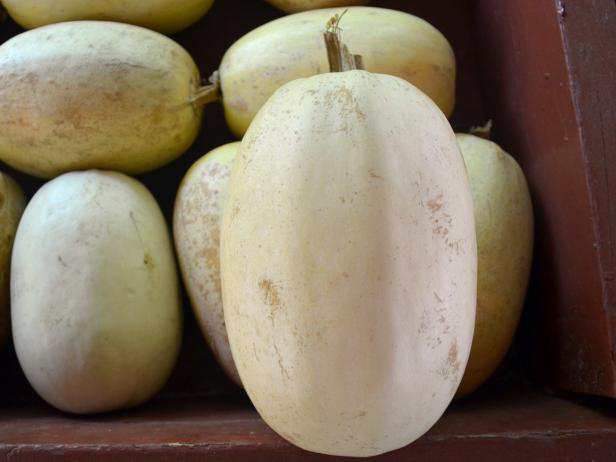
Image courtesy of Jessica Yonker
Spaghetti squash gets its name from its stringy, noodle-like flesh. The skin starts out ivory and turns pale to golden yellow as it matures.
Planting spaghetti squash isn't difficult. If you've grown pumpkins or zucchini, you can grow spaghetti squash. If you've never grown any vegetable, you'll find that planting spaghetti squash is simple. It's basically plant a seed, water, and stand back to watch it grow.
All About Spaghetti Squash
Botanical name: Curcurbita pepo subspecies ovifera
Common Name: Spaghetti squash or vegetable spaghetti
Days to Harvest: 90 to 100 days after planting
Special features: Edible flowers
Plant Type: Annual Vegetable
Size: Grows 2 to 8 feet, depending on variety
The wild ancestors of spaghetti squash hail from Central America, and it was first recorded as a crop in China in 1850. No one is quite sure how it got to China, but it's an easy guess that someone used spaghetti squash to make chow mein.
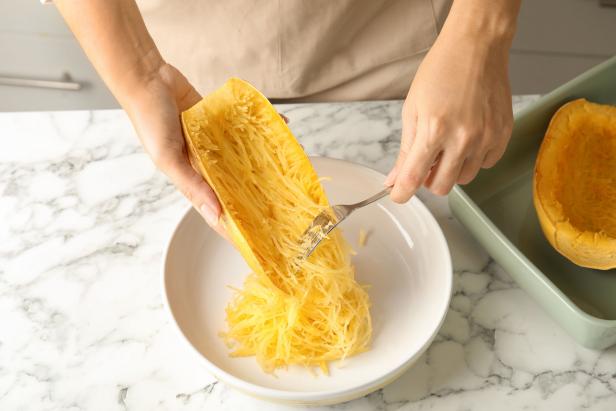
New Africa
To go from squash to pasta substitute, simply scrape cooked spaghetti squash flesh out of the rind with a fork. Top squash noodles with pasta sauce or pesto, or whip up some spaghetti squash chow mein.
Spaghetti squash has a mild flavor and makes a great noodle substitute that pairs well with savory sauces. Learn what you need to know to grow spaghetti squash.
Planting Spaghetti Squash
Grow spaghetti squash where it will receive at least six hours of sun each day. The ideal soil for spaghetti squash plants is nutrient-rich and well-drained. Work at least 3 inches of compost into soil before planting.
Think carefully about where you want to position your spaghetti squash plant in your garden. Vines are large and gobble precious garden space. Many gardeners plant spaghetti squash in the corners of the garden and direct vines to grow along garden edges.
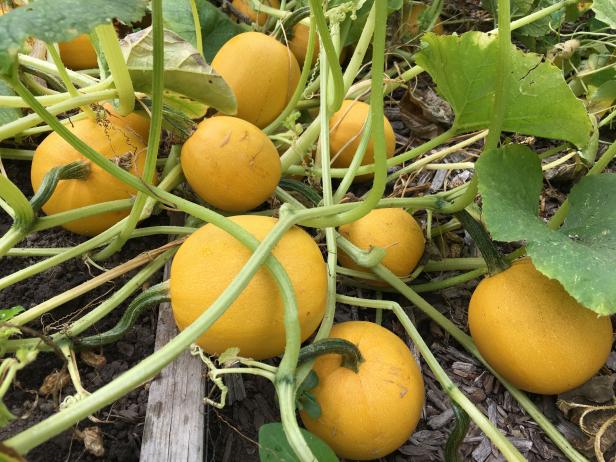
ReneesGarden.com
Grow personal-size spaghetti squash with ‘Baby Spaghetti’ winter squash, which yields dozens of 4- to 5-inch mini squashes per plant.
Especially in northern growing regions, consider covering soil with black plastic a week or two prior to planting to help warm soil. Spaghetti squash plants thrive in heat, and warmed soil encourages strong growth.
Companion Planting for Summer and Winter Squash
For as many squash varieties as there are to grow, there are just as many problems that plague squash plants. Learn companion planting techniques to protect your squash.
Sow spaghetti squash seeds into small mounds of soil, tucking two to three seeds into each mound, burying them about an inch deep. Mound planting provides the advantage of being able to locate the main stem of the vine for targeted watering. This becomes really important later in the growing season when spaghetti squash plants form a leafy tangle.
Growing Spaghetti Squash
When to Plant
Spaghetti squash is a tropical plant and extremely sensitive to frost. Wait a week or two past the last average frost date for your region before planting. In zones with short growing seasons, planting seedlings shaves some time off the crop cycle of 90 to 100 days.
Pots and Vertical Gardening
Growing spaghetti squash in a container works well if you choose a variety with shorter vines like 'Tivoli,' which grows about 3 feet wide and yields well when planted in a 5-gallon container. In raised beds, tuck spaghetti squash into the corners or along an edge and let vines trail out of the bed and onto surrounding walkways or lawn.
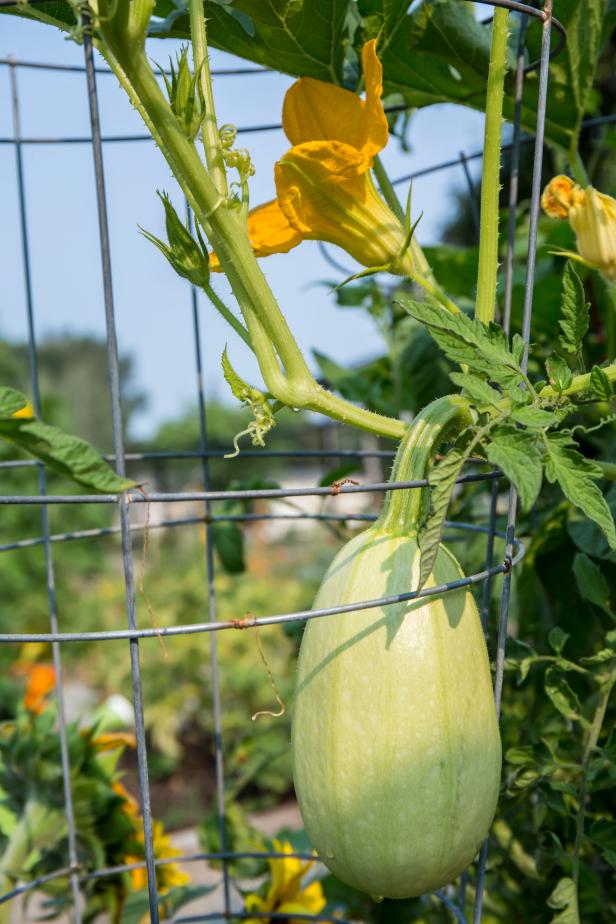
Danita Delimont
Spaghetti squash vines can grow up to eight feet long. Training them to grow up — on a trellis — creates great yields while conserving garden space.
Another way to grow spaghetti squash is vertically — trained onto a trellis or upright support. Consider placing a wire shelf unit just behind spaghetti squash seedlings and letting vines grow up through the shelves. Direct vines with forming fruit so the spaghetti squash rests on a shelf for terrific support. Growing spaghetti squash this way also creates excellent air flow around the plant, which helps manage diseases.
Watering Spaghetti Squash
After planting, keep soil moist until seeds germinate. Increase watering frequency as needed (when soil is dry one knuckle deep) to deliver roughly an inch of water per week, either through irrigation or rainfall. That would be about one deep weekly watering. Once vines have fully leafed out and are forming squashes, increase watering as needed to keep soil moist but not soaked.
When growing spaghetti squash in containers, water whenever soil is dry one knuckle deep. By the time summer heat arrives, most likely you'll be watering daily unless it rains.
Spaghetti squash has big leaves, and during the heat of the day it's not uncommon for them to wilt dramatically. That doesn't necessarily mean the plant needs water. It's just something squash do. If leaves don't return to an unwilted state after sunset, then consider increasing your watering. Wilted leaves early in the morning are a clue you're not watering enough.
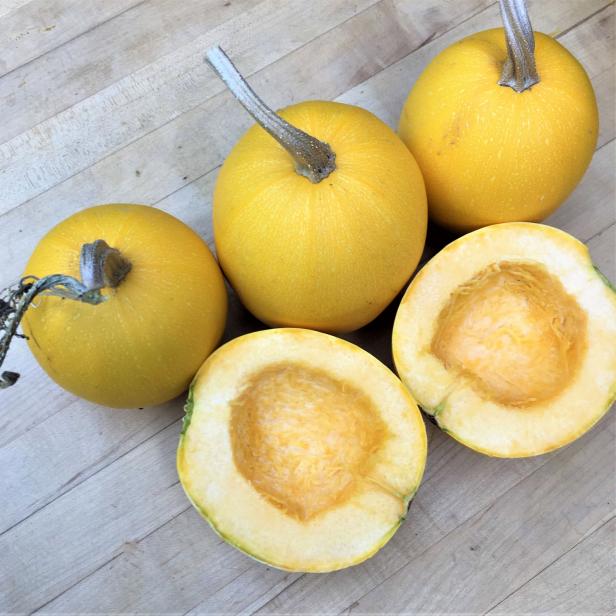
ReneesGarden.com
Spaghetti squash is delicious and nutritious. Growing smaller varieties like 'Baby Spaghetti' makes for quick and easy mealtime prep. Scoop out seeds, drizzle with olive oil and seasonings and roast. Top with grated cheese, and you have a healthy side dish.
Drip irrigation or soaker hoses that deliver water directly to soil are ideal for spaghetti squash because it's susceptible to powdery mildew disease. Try to water early in the morning if you're using overhead watering that wets leaves.
Maintain a 2- to 3-inch-thick mulch layer on the soil around the base of your spaghetti squash vine to help soil retain moisture. Use an organic mulch, such as triple shredded bark, pine needles, fir bark fines or whatever is locally available in your region. If you covered the ground with black plastic, that is an effective mulch, too.
Feeding Spaghetti Squash
When you grow spaghetti squash, you don't really need to feed the plants if you started with compost-enriched soil or have fed your soil with a green cover crop. If you want to boost squash production, you can add some granular fertilizer when blooms start opening. Use a fertilizer labeled for vegetables, applying it according to label directions.
Pruning Spaghetti Squash
A spaghetti squash plant doesn't need pruning to grow well. As a matter of fact, the more vine it produces, the more flowers it will have, and the more squashes you'll potentially get.
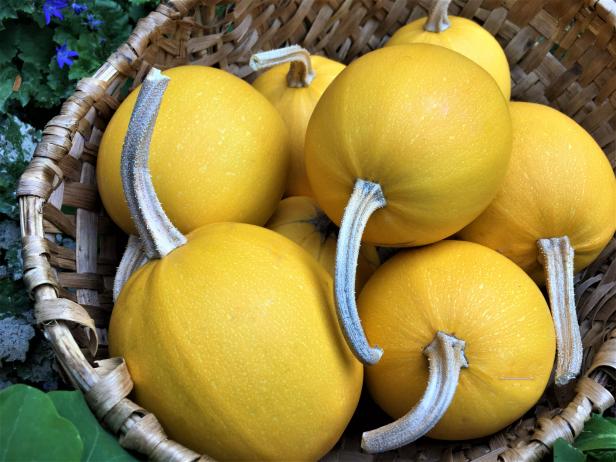
ReneesGarden.com
For small households, varieties like ‘Baby Spaghetti’ winter squash provide perfect portion sizes and an ample harvest. Squash is ready to harvest when the rind turns golden yellow.
The one time to prune is when you're about 30 days away from your zone's average first fall frost date. From that 30-day mark forward, remove female flowers daily to prevent more squash from forming. This helps the plant direct all nutrients to ripening the existing squash before frost arrives.
Spaghetti squash blossoms are edible and can be fried, stuffed, roasted — they're a delicacy worth trying.
When to Pick Spaghetti Squash
It takes 90 to 100 days for spaghetti squash to ripen fully when grown from seed. That means you'll be picking your squash in late summer to fall. Like most winter squashes, you'll look for several signs to know when to pick spaghetti squash.
- Rind color — The color of a ripe spaghetti squash shifts from pale yellow to a deeper gold yellow. Compare different spaghetti squash on the same plant to learn how to distinguish a deeper skin color.
- Rind firmness — The rind should be firm enough that you can't puncture it with your fingernail. Press gently and observe if a mark remains.
- Stem color —The stem of a ripe spaghetti squash should be brown and dry. Sometimes the squash vine itself will be brown and dry, while the stem to the individual spaghetti squash will still be green. If those conditions occur and the squash rind color and toughness are present, harvest that squash.
When harvesting spaghetti squash, don't pull the squash from the vine. You want the stem to remain intact. It helps to seal the squash so it will store well. Use a sharp knife or pruners to cut the squash from the vine. Place your cut so the spaghetti squash has a 2- to 3-inch-long stem. Carry the harvested spaghetti squash by the body, not the stem. If the stem breaks on a spaghetti squash, refrigerate that squash and plan to eat it before it spoils.
It's most important to pick all spaghetti squash before frost. A frost-kissed squash will not cure and store well.
Curing and Storing Spaghetti Squash
Once you harvest spaghetti squash, if you want to store it for any length of time, you need to cure it. To cure spaghetti squash, simply let it sit in a sunny spot for 10 days.
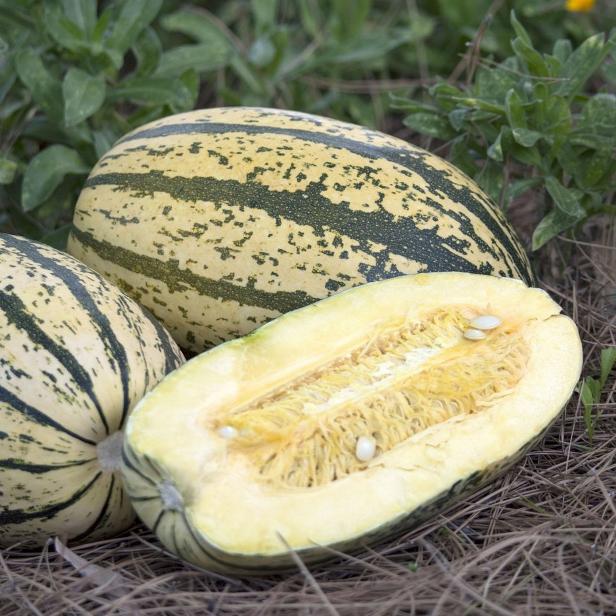
All-AmericaSelections.org
‘Sugaretti’ spaghetti squash is a 2017 All-America Selections winner that produces mid-size fruit on semi-bush vines that grow 2 feet long.
If rain is in the forecast, cover squash or bring them under a porch roof. Do not let curing spaghetti squash experience frost. When squash are fully cured, wipe them with a diluted bleach solution and place them in a cool, dry place.
Types of Spaghetti Squash
The typical spaghetti squash yields a 6- to 7-inch-long yellow squash. Unless the seed packet says it's an F1 hybrid, a plain spaghetti squash is likely an heirloom type that's ideal for seed saving. Look for other varieties of spaghetti squash wherever you like to buy seeds. Here are a few to consider.
'Baby Spaghetti' — Yields small, single-serving squashes 4 to 5 inches across. Vines are semi-bush, growing to 4 feet across.
'Tivoli' — First compact bush spaghetti squash introduced and an All-America Selections Winner. Produces 4- to 5-pound squash that are 7 inches long.
'Small Wonder' — Typically yields 10 to 15 spaghetti squashes per plant. Fruits are smaller, weighing 3 pounds.
'Sugaretti' (shown above) — A striped spaghetti squash that comes in several colors. Semi-bush vines spread only 2 feet long and wide.
Spaghetti Squash Pests and Diseases
The big pests when growing spaghetti squash are squash bugs and squash vine borers. Keep an eye on your plants and inspect leaf undersides for groups of squash bug eggs, which are bronze and oblong. Squish them between your fingers. Squash vine borer is trickier to beat. Learn how to identify and deal with these squash pests.
Spaghetti squash are also susceptible to downy mildew and powdery mildew, two types of fungal disease. Downy mildew usually causes yellow spots on leaf tops, while powdery mildew looks like a white coating on leaf surfaces. Typically these diseases occur with overhead watering or high humidity. You can treat plants weekly with neem oil or fungicide to help prevent these diseases. Powdery mildew is very common on plants in most growing zones by autumn.
Growing Spaghetti Squash FAQs
When is spaghetti squash season?
Spaghetti squash usually ripens in fall, prior to frost. It's a type of winter squash, which means you let it grow until the seeds inside the squash are mature (unlike a zucchini, which you pick when the seeds are soft and immature). Winter squashes store well into winter, providing fresh-from-the-garden flavor long after the growing season is over.
Why are the flowers falling off my spaghetti squash plant?
Spaghetti squash plants have male and female flowers. The male flowers open for one day only and then drop from the plant. If the female flowers aren't pollinated, they also drop from the vine. It's really a normal process and nothing to worry about.
What kind of yield can I expect from a spaghetti squash plant?
A full-size vine might yield up to eight or more spaghetti squashes, depending on the length of your growing season. The types that form smaller squash yield more fruits — literally dozens.
How long do spaghetti squash last?
When properly cured and stored, spaghetti squash lasts up to three months.
Can I eat immature spaghetti squash that's still green when frost arrives?
Yes, you can eat these spaghetti squashes. Treat them like a summer squash, such as zucchini or yellow crookneck. Immature, green spaghetti squash won't store like a cured spaghetti squash. You can place them near a sunny window, and they will continue to ripen, but will never store well.
Are spaghetti squash seeds edible?
Yes, they are. Prepare them just like pumpkin seeds — wash, season, roast and feast!

%20Taniya%20Nayak,%20Ty%20Pennington,%20Alison%20Victoria,%20and%20Brian%20and%20Sarah%20Baeumler_BOTB_HGTV%20.jpg.rend.hgtvcom.196.196.suffix/1683310636672.jpeg)





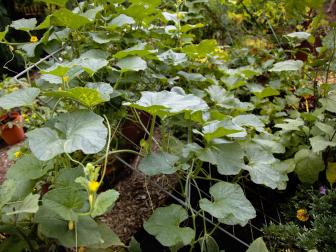
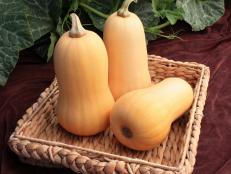
![Homegrown variety of winter squash. Homegrown winter squash. 195956_3603429601142_787136137_n[2].jpg](http://hgtvhome.sndimg.com/content/dam/images/grdn/fullset/2014/2/7/0/195956-3603429601142-787136137-n-2.jpg.rend.hgtvcom.231.174.suffix/1452646912247.jpeg)
